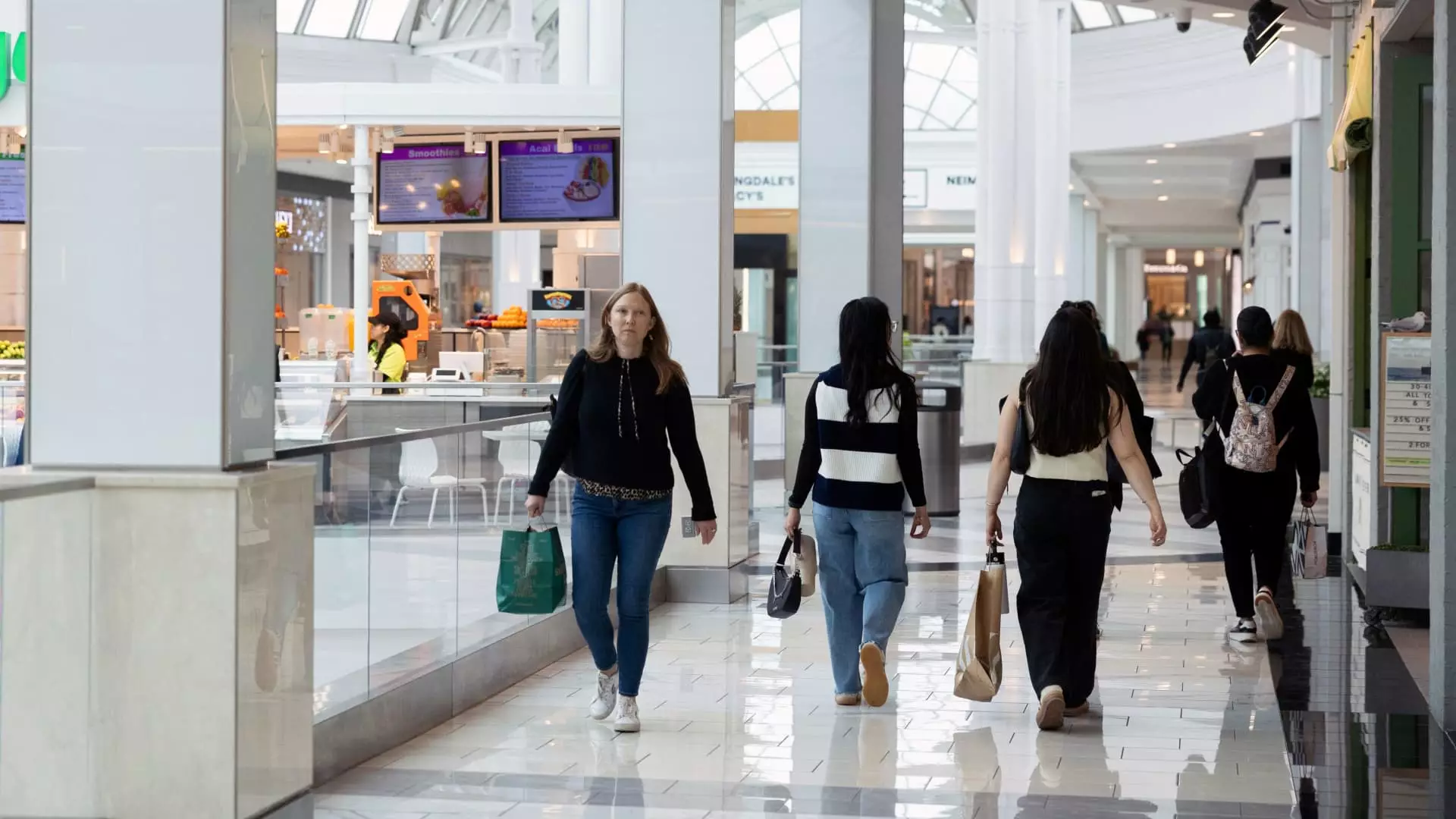As we embark on 2025, it has become painfully clear that America is segmenting itself not only politically but economically as well. The statistics are sobering: lower-income Americans are tightening their belts, focusing on essential purchases while the affluent continue to indulge in luxury. Such distinctions are laying bare a growing chasm that threatens to erode the foundations of middle-class prosperity. Early reports from U.S. credit card lenders reveal a stark disparity in consumer behavior, raising profound questions about the sustainability of this divide.
The Prescriptive Spending of the Needy
At the frontline, organizations like Synchrony, which specializes in retail store cards, report spending declines of 4% among lower-income users—a statistic that should send shockwaves through the financial and political arenas. This decline mirrors a deeper, troubling trend: many Americans are being priced out of their purchasing power thanks to inflation that seems to hang over the economy like a dark cloud. As Synchrony’s CEO, Brian Doubles, admits, lower-income consumers have been curtailing discretionary spending for over a year. The implication is clear: a significant portion of our populace is not just worried about the future but is also succumbing to the burden of existing debts, as evidenced by the soaring percentage of credit card users making only minimum payments—a level not seen in over a decade.
The Luxury Market: Unfazed by Economic Headwinds
Contrastingly, those at the upper echelons appear unfazed, maintaining strong spending trends in dining and travel. Premium services such as first-class tickets and upscale dining are witnessing increases of 11% and 7%, respectively. This disconnect raises crucial concerns: could the wealthy elite remain insulated from broader economic woes while the lower classes suffer? Indeed, analysts like Brian Foran point out that the upper segment has held up better, whereas the lower tier is feeling the pinch. Such a reality conveys a narrative loaded with societal implications—what does it mean for the American dream when significant segments of the population cannot grasp opportunities for upward mobility?
Tariffs and Inflation: A Double-Edged Sword
As the ink dries on President Trump’s trade policies, the ripple effect is becoming more evident. Tariffs have altered consumer behaviors, pushing them away from non-essentials towards the must-haves of living. Consumer giants, including Citigroup, have reported a similar trend: a 5% drop in spending among their retail card segment paints an ominous picture, while spending remains stable among wealthier demographics. Even more concerning is the fact that anxiety over impending price increases due to tariffs is reshaping buying patterns. What once were discretionary purchases have been replaced by urgent needs—the purchase of auto parts and electronics over travel and entertainment signifies an unsettling pivot in American consumer culture.
A Crisis Brewing Beneath the Surface
Though credit card companies that cater to the wealthy are thriving, their success casts a long shadow on the economic landscape they inhabit. What happens when a significant portion of society finds itself unable to participate in this consumerist carnival? If essentials dominate spending, there may be ramifications that go far beyond retail—affecting industries and employment across the board. Bread Financial’s CFO, Perry Beberman, emphasizes the observable shift toward essentials. But let’s not be naïve: this shift could signal a troubling future.
Consumers are hedging their bets against inflation by prioritizing basic needs over luxuries, hinting that today’s consumer confidence may be tomorrow’s economic crisis in waiting. As the financial ecosystem adapts to these shifts, it is imperative that policymakers address this economic dichotomy head-on, lest we risk solidifying a consumer culture that is capable of supporting only the privileged while leaving the less fortunate in economic despair.
The path ahead must be navigated with astute awareness of this stark consumer reality. If the disconnection continues unaddressed, we may soon find ourselves grappling with the consequences of an increasingly fractured society, one that celebrates opulence while those beneath struggle for the fundamentals.

